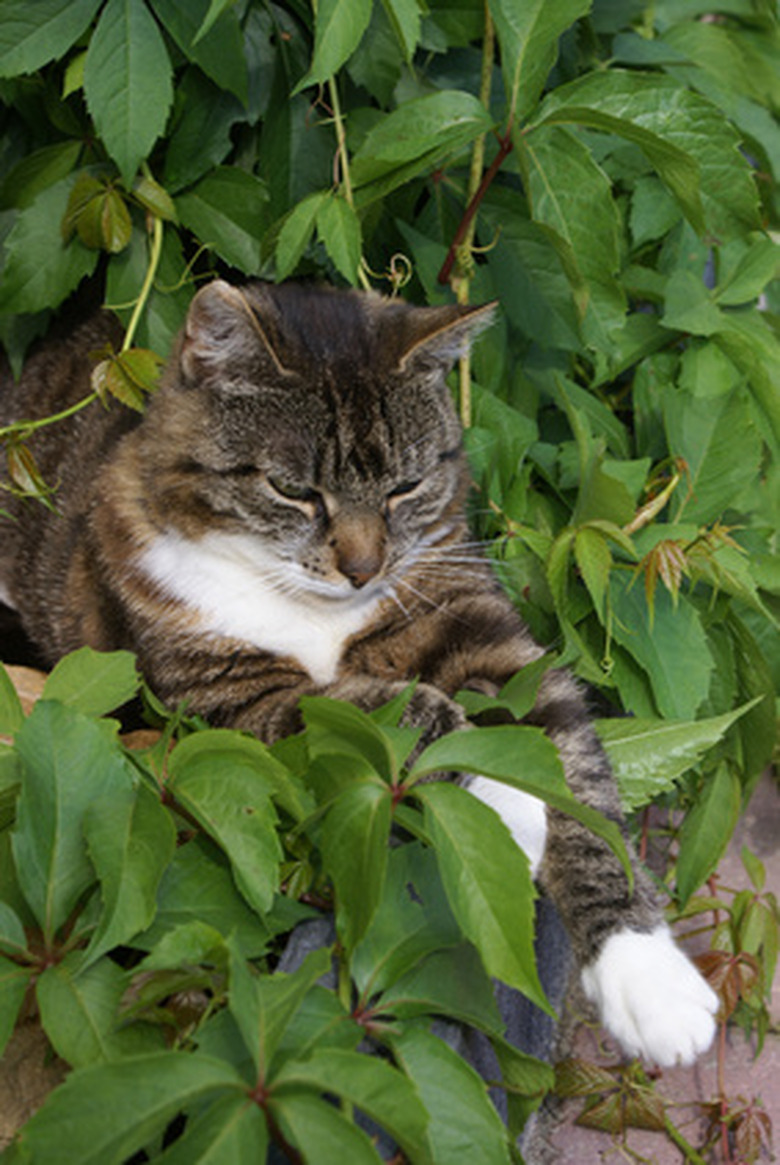Pond Plants That Are Poisonous For Cats
While many plants and flowers make colorful landscapes for yards and pond areas, it is important to keep in mind of any animals or pets that may live nearby. Pets and domesticated animals are curious and will often eat leaves or flower buds of plants. Before planting flowers or setting up a garden pond in your yard, be sure to research the types of flowers you plan to plant so that you can keep pets and other nearby animals safe.
Water Hyacinth
Water hyacinth (Eichhornia Crassipes) can cause vomiting and anorexia in cats. It is also toxic to dogs and horses. The water hyacinth is normally found in the fresh waters of Florida. The plant's appearance is recognized by its rounded, leathery and waxy green leaves with dark feathery roots that suspend down into the water, making the plant float above the pond. The water hyacinth sprouts lavender flowers when it blooms. It cannot thrive in cold climates but can create new growth from submerged stem tips that are protected from the freezing water.
- While many plants and flowers make colorful landscapes for yards and pond areas, it is important to keep in mind of any animals or pets that may live nearby.
- Water hyacinth (Eichhornia Crassipes) can cause vomiting and anorexia in cats.
Water Hemlock
Water hemlock (Cicuta maculata) is a perennial herb that will cause a number of symptoms in cats, such as seizures, tremors, extreme stomach pain, diarrhea, fever, respiratory depression and death. A water hemlock is found in a wet environment such as ponds, streams or ditch banks. All parts of the water hemlock are poisonous and the roots are often mistaken for wild parsnip or artichoke. The plant has short, tuberous roots and hollow stems with purple stripes. It blooms small, umbrella-like clusters of white flowers.
Elephant Ears
Elephant ears (Colocasia esculenta), an herbaceous perennial, are toxic to both cats and dogs. Symptoms of digesting elephant ears are excessive drooling, vomiting and difficulty swallowing. It will cause intense burning of the tongue, lips and mouth. The tubers of the plant are popular in Central and South America because they are used in a variety of meals. It is a popular food that is a part of the residents' basic diet. Elephant ears have large leaves that reach up to 6 feet in length. Elephant ears grow along swamps and stream banks.
- Water hemlock (Cicuta maculata) is a perennial herb that will cause a number of symptoms in cats, such as seizures, tremors, extreme stomach pain, diarrhea, fever, respiratory depression and death.
